The CoRoT satellite: the search for Earth-like planets Understand article
Malcolm Fridlund from the European Space Agency (ESA) describes the search for extra-solar planets and explains how they can help us to understand the origin of life on Earth.
CoRoT
On 27 December 2006, the French space agency CNES (Centre National d’Etudes Spatiales), ESAw1 and their partnersw2 launched the CoRoT satellite to search for small Earth-like planets outside our Solar System (extra-solar planets, or exoplanets) and detect ‘starquakes’. The satellite’s name is derived from Convection (Co), Rotation (Ro) and planetary Transits (T), and its scientific objectives are to study the rotation of stars and the convection – the upwelling of hot gas – from the stellar interior, and to detect planets that pass between Earth and the stellar surface (a planetary transit).
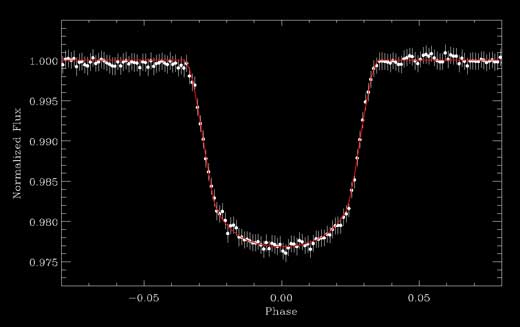
Image courtesy of ESA
All three phenomena can be studied by measuring the changes in the light emission of the observed stars. The convection from the interior of a star causes the intensity of the light it emits to increase or decrease by a few parts per million. Areas of intense magnetic activity inhibit convection, forming areas of reduced surface temperature which are visible as darker starspots. As the star rotates, its light output changes by a very small amount, depending on the number of starspots on the hemisphere that has rotated into view – so monitoring the starspots tells us how fast the star is rotating. Finally, when a planet in orbit around a star passes between the CoRoT satellite and the star, it can be detected as a small dip occurring periodically in the star’s light output.
Planetary transits are used to detect exoplanets, while the convection and rotation measurements are used to characterise the star around which the discovered planets orbit. CoRoT will also be used for astroseismology: detecting acoustical waves generated deep inside a star that send ripples across its surface, known as ‘starquakes’. The exact nature of the ripples allows astronomers to calculate the star’s precise mass, age and chemical composition. In this article, however, we will concentrate on the search for exoplanets.
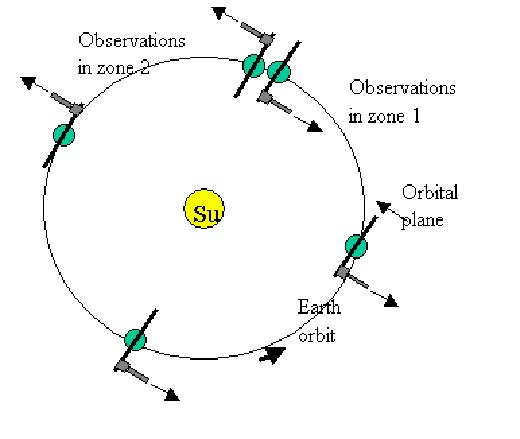
Image courtesy of ESA
Measuring these phenomena requires a space telescope with a very precise photometer (or light meter). Unlike the larger Hubble Space Telescope (launched in 1990), CoRoT – which measures only 30 cm in diameter – was designed specifically for this purpose. The only instrument on board is a camera that takes one picture every 32 seconds. The on-board computer then measures the light (changes) from each star, and, over time, produces a light curve. The spacecraft is directed at the same spot in the sky for up to 150 days at a time, simultaneously observing up to 12 000 stars. The longer it remains pointed towards the same stars, the more transits it can see.
CoRoT can detect planets that are close to their star – taking up to 50-75 days to circle it (i.e. this is the length of their ‘year’) – and can find planets as small as our own Earth. The shape of the light curve (see diagram above) tells us how the planet is moving, how the outer layers of the star behave, and also the size of the planet. Once a planet has been detected by CoRoT, astronomers can observe the star and its planetary system with other types of instruments on very large telescopes on the ground, and learn more about it
Already, the CoRoT satellite has found several large planets. It is now also beginning to pick up what we think are small planets. This should enable us to find out how common our own type of planet is in the Universe.
Extraterrestrial life
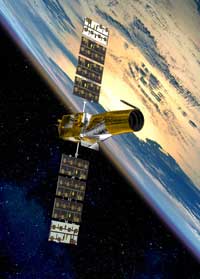
satellite in its orbit at 900 km
altitude over Earth’s poles
Image courtesy of ESA / CNES
Why is it important to know how common Earth-like (i.e. small and rocky) planets are? Firstly, because we would like to know whether our planet is unique. Furthermore, finding Earth-like planets outside our Solar System may help us to understand how life arose on Earth about 3.5 billion years ago.
Based on a hypothesis made more than 30 years ago, scientists assume that all types of ‘life’ work the same as that on Earth, and that alien life forms would have the same sort of metabolism as ours. Therefore, researchers base their search on what happened on Earth. Although the process by which life on Earth first emerged is still not known, it is believed to be linked to the presence of liquid water on a hard, rocky planetary surface. So if there are any other Earth-like planets, have any of them evolved life?
Finding an extra-solar planet as small as Earth is difficult. How much harder would it be to observe life forms at such distances? It would be particularly difficult if they were just bacteria, which were the only living organisms on Earth for the first few billion years and still outnumber other species by a million to one today in terms of individuals, and possibly also species number.
The key is to find a planet with its atmosphere out of chemical equilibrium. A planet’s atmosphere (like almost everything else) tends towards a state of equilibrium (in which every chemical reaction proceeds at the same speed as its reverse process). Life, however, changes its environment: for instance, all the free oxygen (O2) in our atmosphere has been produced by living organisms – plants and other organisms take up carbon dioxide and process it to oxygen, which is then released. Oxygen is so reactive that, if all life were to disappear from Earth, the free oxygen in our atmosphere would disappear in less than 4 million years (a short period given the billions of years of Earth’s history).
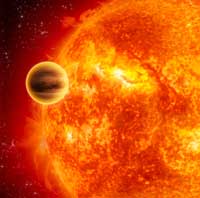
Jupiter-sized extra-solar
planet HD 189733b, now
known to have methane and
water in its atmosphere
(from studies with the
Hubble and Spitzer Space
Telescopes). Methane is the
first organic molecule to be
found on an extra-solar
planet. The discoveries come
from spectroscopic studies of
light from the parent star
that has passed through the
planet’s atmosphere
Image courtesy of ESA
A similar chemical disequilibrium occurred when life originated on Earth and bacteria produced an overabundance of methane. What happened to the methane-producing bacteria and their world? We don’t actually know, but it is believed that new organisms evolved which produced oxygen instead: the oxygen was poisonous for the methane producers, and most of them died out.
The gas composition and other conditions such as temperature and pressure tell you what the equilibrium should be (in the case of Earth, similar to the atmosphere of Mars). So if we could analyse the chemical equilibrium of an exoplanet’s atmosphere, we might determine if there is life as we know it, and maybe even to what stage evolution has progressed (methane or oxygen producers).
The atmospheres of two very large and hot exoplanets have been studied with photometric measurements by the Hubble and Spitzer space telescopes as well as ground-based telescopes, and water and methane have been detected on one (see image to the right). This is another step towards proper comparative planetology, comparing the planets in our Solar System with those in other systems. With the aid of telescopes like CoRoT, designed specifically to find small rocky planets similar to Earth, we can expect – within the next few years – to find other stars that are circled by planets very similar to our own.
However, current technology is not sufficient to analyse the atmospheres of such smaller planets. The light we receive from an exoplanet is extremely feeble, and very large telescope apertures are needed: of all the photons radiated by an exoplanet, only a few photons per square metre arrive on Earth. Furthermore, our atmosphere contains so much oxygen and methane that there are already many ‘oxygen photons’ and ‘methane photons’ (photons with methane or oxygen signatures, respectively). The few ‘oxygen photons’ and ‘methane photons’ from an exoplanet would have to compete with all of these, making it impossible to detect them. Therefore we need to go into space – with large telescopes – which is both very difficult and very expensive. Scientists are developing the next generation of instruments to be technically able to carry out the necessary observations to tell us if these planets have also produced life and, if so, what happened to it.
Ultimately, we hope to apply this knowledge to understanding the evolution of life on our own planet.
As we go to press
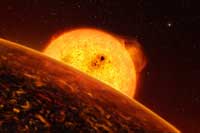
Corot-7b
Image courtesy of ESO / L.
Calcada
CoRoT first caught sight of a planet transiting the star CoRoT-7, to the left of Orion in the constellation of Monoceros (the Unicorn), about 500 light-years away, in Spring 2008. However, confirming the planet’s nature took months with large ground-based telescopes, so its discovery wasn’t officially announced until 3 February 2009.
To measure the planet’s mass and density, astronomers then used the High Accuracy Radial velocity Planet Searcher (HARPS) spectrograph attached to the 3.6 m telescope at the European Southern Observatory’sw4 La Silla Observatory in Chile, performing the longest set of observations (70 hours) on this machine so far. On 16 September 2009, the results were finally announced.
The planet, known as CoRoT-7b, is about the mass of Earth, which puts it among the lightest known exoplanets. With a diameter less than twice that of Earth, it is also the smallest exoplanet measured so far.
Every 20.4 hours, CoRoT-7b eclipses a small fraction (one part in 3000) of the light of its star for a little over one hour. Orbiting its star at a speed of more than 750 000 km/h, more than seven times faster than Earth’s motion around the Sun, it is the fastest-orbiting exoplanet known.
And not only that: it is only 2.5 million km away from its host star, or 23 times closer than Mercury is to the Sun, which also makes it the closest known planet to its host star. It is so close that it must experience extreme conditions, which make it uninhabitable to life as we know it: the probable temperature on its ‘day face’ is above 2000 degrees Celsius, but minus 200 degrees Celsius on its ‘night face’.
The calculated density is close to that of Earth, suggesting that the planet’s composition is similarly rocky. Theoretical models suggest that the planet may have lava or boiling oceans on its surface.
The astronomers found from their dataset that CoRoT-7 hosts another exoplanet slightly further away from the star than CoRoT-7b. Designated CoRoT-7c, it circles its host star in 3 days and 17 hours and has a mass about eight times that of Earth. Unlike CoRoT-7b, this sister planet does not pass between its star and Earth, so astronomers cannot measure its radius and thus its density.
The finding brings astronomers ever closer to discovering inhabitable extra-solar planets, but such planets would need to be further from their star to support life as we know it.
Web References
- w1 – To learn more about the European Space Agency, see: www.esa.int
- w2 – To find out more about the CoRoT satellite and the partners of the mission, see: www.esa.int/science/corot
- w3 – For more information about ESTEC, see the ESA websitew1 or use the direct link: http://tinyurl.com/39nw3r
- w4 – To learn more about the European Southern Observatory, see: www.eso.org
Resources
- Listen to the author’s podcast about the CoRoT project, which can be found on the ESA websitew1 or via this direct link: http://tinyurl.com/ydoggpy
- Find out more about the search for exoplanets in this article:
- Jørgensen UG (2006) Are there Earth-like planets around other stars? Science in School 2: 11-16.
Institutions
Review
This article on the search for exoplanets can trigger scientific discussions on what life is, and why we are interested in studying the physical and chemical characteristics of celestial bodies. It can also be used as a basis for philosophical and social discussions about the relationship of humans with possible alien life forms.
Marco Nicolini, Italy





